-
随着经济全球化和社会信息化加快发展,全球毒品滥用问题日益严重。据《2019年世界毒品报告》显示,全球每年约有2.7亿人吸毒,近60万人直接死于毒品滥用。尽管中国毒品滥用形势持续好转,但是毒品滥用规模依然较大,截止2019年底,中国现有吸毒人员214.8万名,占全国人口总数的0.16%;此外,吸毒活动隐蔽性增强,新型毒品增多,亟需建立全方位毒情监测体系,推动禁毒人民战争取得新成效。
目前常用的毒品滥用监测方法包括人口调查、犯罪统计、医疗记录、治疗需求及毒品缴获量等。人口调查的成本高昂、耗时,并且受到人口覆盖率有限的影响,通过上述方法确定的毒品滥用量有很大的不确定性。环境科学领域的快速发展为毒品滥用的评估提供了新思路。Daughton等[1]于2001年首次提出“污水流行病学”概念,将城市生活污水中监测的毒品及代谢物的浓度用于特定区域内毒品滥用量的评估。相较于传统方法,基于污水监测指标估算毒品滥用量具有实时监测、成本低、数据客观等优势,在全球毒情形势监测中得到广泛应用。欧洲毒品与毒瘾监测中心(European Monitoring Center for Drugs and Drug Addiction, EMCDDA),联合国毒品与犯罪调查办公室(United Nations Office on Drugs and Crime UNODC)及澳大利亚刑事情报委员会(Australian Criminal Intelligence Commission, ACIC)等机构对污水中常见毒品进行长期监测,并基于污水中的毒品原体或代谢物的浓度估算不同区域毒品滥用量。González-Mariño等[2]基于液相色谱-质谱/质谱联用技术测定了2011—2017年来自欧洲、澳大利亚、加拿大、美国、韩国等120个城市常见毒品及代谢物的含量(苯甲酰爱康宁、四氢大麻酸、苯丙胺、甲基苯丙胺、亚甲二氧基甲基苯丙胺(MDMA)),并根据特定区域人口数量估算了其滥用量。结果表明,欧洲南部、西部地区以及南美的毒品滥用主要为可卡因;而欧洲东部、北部地区及美国和澳大利亚主要滥用毒品为苯丙胺类。北京大学李喜青教授是国内最早开展城市生活污水中滥用药物监测研究的团队,于2012年测定了北京、上海、广州、深圳地区甲基苯丙胺、海洛因、氯胺酮、MDMA等常见毒品及代谢物的含量,并揭示甲基苯丙胺和氯胺酮是中国的主要滥用毒品[3-4]。
近年来,全国各省市禁毒部门积极开展城市生活污水毒情监测工作,在吸毒人员管控、追查制毒窝点、打击毒品犯罪方面发挥了重要作用[5]。《Nature》新闻报道了中国的污水监测技术在缉毒禁毒实际工作中的应用[6]。但是,污水监测在禁毒实战中也存在一定的局限性,如目前主要开展城市生活污水监测,而污水处理厂一般是将几个区域的污水集中处理,无法精准反应每个区域的毒品滥用情况;另外,制毒窝点通常隐蔽于农村、乡镇等地区,而这些区域的污水并未进行集中处理,因此无法准确客观的动态监测农村等地区的毒情形势。考虑到大气环境监测采样地点选择的灵活性及监测数据的近实时性,欧美等国家探索将大气环境中的毒品监测作为污水监测方法的补充,将两种监测手段相结合,以期为缉毒禁毒工作提供更有价值的数据[7]。本文将针对大气环境中毒品的来源及赋存形态、样品的采集及前处理方法、仪器分析方法、全球大气环境中毒品变化趋势及健康风险评估等进行综述,并提出该领域目前存在的问题及今后的研究建议。
-
大气环境中的毒品来源包括制毒工厂或者毒品贩运过程的直接排放、毒品滥用过程的排放、古柯、大麻种植地的植物排放等。通常在制毒窝点或其周围大气环境中毒品原体的浓度较高,如甲基苯丙胺在提纯和结晶过程中会被大量释放到空气中,其浓度高达100—760 μg·m−3 [8]。毒品滥用是大气环境中毒品的主要来源,其在空气中的赋存形态与毒品本身的理化特性和给药途径有关。毒品滥用方式包括烟吸、烫吸、鼻嗅、口服及注射等5种常见方式。海洛因的滥用方式主要为注射和烫吸;可卡因滥用主要通过鼻嗅和烟吸;苯丙胺类毒品多为片剂,滥用方式主要为口服;氯胺酮一般直接用鼻腔吸入粉末;大麻的吸食方式主要是烟吸。由此可见,烫吸和烟吸过程可能是环境空气中毒品的主要排放源。尽管通过口服或注射等给药方式在毒品滥用过程中不会直接排放毒品,但是在吸食毒品前的准备过程会将毒品暴露于空气中,因此甲基苯丙胺等仍可能存在于大气环境中。除了上述两种途径外,污水与大气环境的水-汽交换过程也可能成为大气环境中毒品的可能来源[9]。
表1列出了全球常见毒品的理化性质。苯丙胺类物质和氯胺酮可能主要存在于气相中,而可卡因、海洛因及大麻等毒品,由于其较低的蒸气压和较高的极性,可能更容易存在于颗粒物中。Lin等[9]分析了污水处理厂周边颗粒物和气体中的甲基苯丙胺和氯胺酮的浓度变化,结果表明两种常见毒品主要分布在气相中,占比分别为62%和80%,而颗粒相中两种毒品的占比均低于30%。
Viana等[10]测定了可吸入颗粒物(PM10)和细颗粒物(PM2.5)中可卡因的含量,两种粒径范围内可卡因的浓度较为接近,由此表明可卡因主要分布在PM2.5中。Cecinato等[11]研究了可卡因和3种大麻素在颗粒物中的粒径分布特征,结果表明可卡因主要分布在PM2.5中,占比高于90%;而3种大麻素在不同功能区其粒径分布略有不同,如城区△9-四氢大麻酚(△9-THC)和大麻二酚(CBD)在PM2.5的占比分别为75%—80%和77%—101%;而大麻酚(CBN)在城区和远郊区的粒径分布有明显差异,城区大麻酚在PM2.5中的占比高于92%,而在远郊区其占比仅为60%。
-
大气环境样品采集包括主动采样和被动采样两种形式。主动采样器需要外部动力,一般利用采样泵抽取空气;而被动采样器主要是基于分子扩散或者渗透原理采集样品。主动采样器有较高的采样率,在相对较短的时间内可以收集较大样品量;而被动采样器一般需要较长时间的连续累积收集样品。
根据采样流量不同,颗粒物样品的采集仪器包括大流量、中流量和小流量采样器。考虑到大气环境中毒品的含量为pg·m−3量级,一般采用大流量采样器[12-14](采样流量:1.1 m3·min−1)和中流量采样器[15-16](采样流量:30 m3·h−1)收集24 h颗粒物样品。为了减少微环境的扰动及采样噪声对周围环境造成的影响,一般用小流量采样器(6—16.7 L·min−1)收集室内颗粒物样品,通过增加采样时间或者将采集的多个样品合并为1个样品以达到毒品的检出限[17-18]。颗粒物的被动采样一般通过收集室内降尘样品进行毒品含量分析,如Cecinato等[19]收集了机场、学校、居民楼内的降尘样品,用于分析室内环境中可卡因、△9-四氢大麻酚、大麻酚和大麻二酚的含量;室内降尘样品的收集也可以用于特定场所内毒品的暴露分析[20]。特氟龙滤膜(Teflon)和石英滤膜(Quartz)均可用于颗粒物样品的采集,采集后的滤膜需要用铝箔纸包好,保存在-20 °C条件下,以免样品被污染或者氧化、分解和光解。
气体中毒品含量的相关文献报道较少,Lin等[9]利用Tisch公司研发的采样器同时收集了颗粒物和气体样品用于分析甲基苯丙胺和氯胺酮的浓度,颗粒物样品收集于滤膜上,而气体吸附在聚氨酯泡沫(PUF)上。Doran等[21]利用碳吸附管和涂有不同涂料(如聚二甲基硅氧烷PDMS等)的固相微萃取装置(SPME)富集空气样品,用于评估储存室内毒品的挥发量。被动的固相微萃取装置吸附的气体量较低,而且易受周围空气扰动的影响,McKenzie等[20]开发了动态固相微萃取装置用于收集曾经作为制毒场所的大气环境样品,用于分析其中甲基苯丙胺的含量。
-
颗粒物样品的前处理一般包括萃取和净化。目前常用的萃取技术包括索氏提取、超声萃取和加压萃取。Cecinato等[11-12,14]通过索氏提取方法提取颗粒物样品中的待测毒品物质,步骤如下:将采集颗粒物的滤膜加入到150 mL二氯甲烷/丙酮(4∶1)混合溶剂中进行索氏提取16 h,利用Kuderna-Danish蒸发浓缩装置将溶剂蒸干,残留物溶解在异辛烷/二氯甲烷(9∶1或8∶2)混合溶剂中,然后用氧化铝柱进行纯化;分别用异辛烷、异辛烷/二氯甲烷(3∶2)和丙酮洗脱出正构烷烃类非极性组分、多环芳烃类组分及极性组分,其中丙酮洗脱出的物质包含常见的毒品;最后将洗脱液蒸干,将残留物溶解在二氯甲烷中待分析。
索氏提取法一般用于样品中含有可卡因的前处理过程。对于含有大麻类的颗粒物样品,超声萃取是常用的方法[13]。步骤如下:将采集颗粒物的滤膜加入到15 mL氯仿中,超声萃取30 min,重复上述步骤3次,合并萃取液,氮吹浓缩至3 mL左右,并通过聚四氟乙烯滤膜进行过滤,再次吹干,用1 mL环己烷复溶;通过溶剂分配方法去除干扰物:将有机混合物在1 mL 0.2 mol L−1碳酸氢钠水溶液/甲醇(10:1)溶液中振摇15 min,两相分离后丢弃水相;重复上述步骤3次,合并有机萃取液,脱水,蒸发,并用100 μL乙腈复溶。
Postigo等[15]提出了用加压流体萃取法提取颗粒物中的毒品组分,并优化了萃取条件,步骤如下:通过两个萃取循环实现颗粒物样品中多种毒品组分的提取,第一个循环用甲醇溶剂进行萃取,第二个循环用甲醇/丙酮(50:50)溶剂进行萃取。两个萃取循环的仪器参数设置相同:载气压力1250 psi,温度90 ℃,预热时间、静态萃取时间和加热时间均为5 min,冲洗体积60%,氮吹扫时间60 s。在温和的氮气流下将萃取液浓缩,并用1.5 mL甲醇冲洗样品瓶壁,将该浓缩液转移至液相色谱进样瓶中,进一步蒸干,最后将残留物溶解在500 μL甲醇中待分析。
目前尚无关于上述3种前处理方法用于颗粒物中毒品萃取效率比较的文献报道。但是,Rynö等[22]比较了索氏提取、超声萃取及加压流体萃取对颗粒物中多环芳烃的萃取效率,结果表明加压流体萃取操作简便,萃取效率优于索氏提取和超声萃取,并且萃取后的溶液可以直接用液相色谱仪进行分析;索氏提取是一个费时费力的过程;而超声萃取由于其强烈的萃取作用,可能会使采样滤膜中的物质解离。由此可见,加压流体萃取技术在颗粒物毒品组分的提取过程中有较大的应用潜力。
通过PUF采集的气体样品,其萃取步骤如下:首先将PUF放在旋转蒸发仪中用甲醇萃取,蒸干后,将待分析物溶解在25%—50%的甲醇中待分析[9]。通过固相微萃取富集的空气样品,可不经过前处理,直接进行分析;而对于碳吸附管收集的空气样品,一般通过在采样气流相反方向用丙酮进行冲洗,从碳吸附管中洗脱下待分析物[21]。
-
由于大气环境中存在着成百上千种组分,需要一种灵敏度高且选择性好的方法来检测空气中的毒品,目前常用的方法是色谱-质谱联用法。Cecinato等[12]利用气相色谱-质谱联用仪(GC-MS,Ultra GC, DSQ Ultra MS,Thermo公司,意大利)测定了颗粒物萃取液中可卡因的含量,仪器设置条件如下:进样方式为不分流进样;程序升温:初始温度为90 ℃,以15 ℃·min−1速率升温至190 ℃,保持2 min,再以4 ℃·min−1速率升温至290 ℃,保持13 min。质谱扫描首先为全扫描模式,通过保留时间确定待分析物;为了更准确的进行定量分析,在选择性离子监测模式下进行质谱分析。大麻素在用质谱分析前需要进行衍生化,Balducci等[13]将经过前处理的萃取液与MTBSTFA+1% TMCS进行反应,然后在气相色谱-质谱/质谱联用仪(GC-MS/MS,Ultra GC, Polaris-Q MS,Thermo公司,意大利)上进行测定。仪器设置条件如下:载气为高纯氦气,流量为1 mL·min−1;程序升温:初始温度为60 ℃,以15 ℃·min−1速率升温至170 ℃,再以15 ℃·min−1速率升温至290 ℃,然后进行15 min吹扫;串联质谱检测在碰撞模式下进行,离子源温度250 ℃,碰撞气体氦流速1.5 mL·min−1。与GC-MS相比,串联质谱能够同时记录母离子和子离子的质谱信息,增加了分析方法的选择性。通过固相微萃取富集的空气样品,可不经过前处理,直接用GC-MS进行分析。McKenzie等[20]通过动态固相微萃取装置直接收集室内空气样品,并利用GC-MS分析仪(6890型GC,5973型MS,安捷伦公司,美国)测定了甲基苯丙胺含量。仪器分析条件如下:将已经富集空气样品的萃取纤维插入到气相色谱仪的进样口,1.5 min后以30 mL·min−1流速进行吹扫,使热脱附样品进入仪器分析系统;进样方式为不分流进样;载气为高纯氦气,线性流速为36 cm·s−1;程序升温:初始温度为40 ℃,保持2.5 min,以40 ℃·min−1速率升温至300 ℃,保持3 min;传输线温度:300 ℃。
液相色谱-质谱/质谱(LC-MS/MS)联用技术被广泛用于城市生活污水中毒品及代谢物的检测分析[2,23-24]。对于颗粒物样品,经过前处理后的萃取液进行LC-MS/MS的分析条件与污水分析类似。Postigo等[15]建立了颗粒物中17种滥用药物及代谢物的LC-MS/MS(Agilent 1100,安捷伦公司,美国;4000 TRAP,AB SCIEX公司,美国)分析方法,包括3种可卡因类,5种苯丙胺类,3种鸦片类,3种大麻素以及3种新精神活性物质。分析条件如下:流动相A为含有20 mmol·L−1甲酸/甲酸铵的水溶液,流动相B为乙腈;流速为0.3 mL·min−1;采用梯度洗脱程序:0—12 min,B相比例从5%增加到40%;12—18 min,B相比例增加到70%;18—19 min,B相比例增加到80%;19—26 min,B相比例增加到100%;100%乙腈流动相保持2 min净化色谱柱;然后在2 min内B相的比例从100%降至5%,最后将5%乙腈流动相保持10 min用以平衡色谱柱;离子源为电喷雾离子源(ESI),分析大麻素选择的检测方式为负离子模式(ESI−),而其它毒品及代谢物的检测选择正离子模式(ESI+);质谱的扫描方式为选择反应监测模式,同时监测母离子和子离子的质谱信息。
除了质谱分析方法,离子迁移谱(IMS)可用于特定环境中毒品的快速检测分析。Lai等[25]通过顶空SPME采样和IMS检测技术相结合用于扫描货运中是否有走私毒品的痕迹;该方法可以监测可卡因、MDMA和大麻,但是甲基苯丙胺的测定会受到尼古丁等物质的干扰。Guerra-Diaz等[26]测试了一种通过平面固相微萃取的空气采样设备,可将分析物有效吸附到固相微萃取纤维头的涂层上,然后直接热脱附到IMS中,在短时间、低样品量条件下可以检测出ng量级的MDMA。
-
由于大气中的化学组分复杂,空气中毒品浓度较低,且容易受到气象条件、传输、沉降、化学反应过程等影响,大气环境中毒品的相关研究并未像污水中的毒品监测一样备受关注。目前主要有两个研究小组对大气环境中毒品含量进行了相关报道,分别为西班牙环境评估与水研究所(IDAEA-CSIC)Cristina Postigo研究小组和意大利国家研究委员会大气污染研究所(CNR-IIA)Angelo Cecinato研究小组。表2列出了全球主要地区大气颗粒物中常见毒品含量,其中可卡因是研究最广泛的毒品。图1给出了全球主要城市大气颗粒物中可卡因的浓度值,除了波尔图和圣地亚哥的浓度值用柱状图表示外(平均浓度值仅有1个,右侧纵坐标为其浓度值),其它城市均用箱线图表示。由图1和表2可知,可卡因最高浓度出现在智利的圣地亚哥城市,平均浓度为2800 pg·m−3,最大浓度值高达3300 pg·m−3 [14]。总体来看,西班牙巴塞罗那和马德里大气颗粒物中可卡因的含量较高,浓度范围为200—500 pg·m−3;除少数城市外,如都灵(260 pg·m−3)和那不勒斯(210 pg·m−3),意大利主要城市大气颗粒物中可卡因的浓度在几十pg·m−3;英国伦敦可卡因的浓度范围为50—230 pg·m−3;阿姆斯特丹(荷兰)与意大利主要城市的可卡因浓度较为接近,浓度范围30—70 pg·m−3;而斯德哥尔摩、阿尔及利亚和塞尔维亚空气中可卡因的含量均低于检出限[14]。除可卡因外,大麻的相关研究报道较多。在3种主要组分中,大麻酚的占比在夏季高达90%,△9-四氢大麻酚和大麻二酚在冬季的占比接近[11]。但是,在罗马大气颗粒物中检测出△9-四氢大麻酚的浓度约为大麻酚的2倍,而大麻二酚的浓度接近检出限;巴里空气中△9-四氢大麻酚和大麻酚的浓度接近;阿尔及利亚空气中仅检出大麻酚,而其它两种大麻组分的浓度低于检出限[13]。大麻酚最高浓度出现在西班牙巴塞罗那,空气中的浓度高达6020 pg·m−3;该城市的△9-四氢大麻酚和大麻二酚的浓度也高于文献中报道的其它城市浓度值,最大值分别为417 pg·m−3和981 pg·m−3 [27]。在意大利,总大麻素的高浓度出现在都灵、博洛尼亚、罗马,其均值浓度分别为960、680、537 pg·m−3;其它地区三种大麻素的浓度基本低于100 pg·m−3。
除可卡因和大麻外,其它毒品的研究主要集中在西班牙。Viana等[16]测定了2007年在巴塞罗那和马德里城区采集的颗粒物样品中17种毒品及代谢物的浓度,结果表明6-乙酰吗啡、MDMA、甲基苯丙胺在两个城市的空气中检出率低于10%;尽管苯丙胺的检出率为70%,但是其浓度值仅为2 pg·m−3,远低于可卡因和△9-四氢大麻酚的浓度;马德里海洛因的浓度范围为9—143 pg·m−3;对于其它毒品及代谢物,可卡因酯交换产物乙基苯酰爱康宁、海洛因代谢物吗啡、△9-四氢大麻酚代谢物四氢大麻酸、新精神活性物质LSD及其代谢物、麻黄碱等8种物质的浓度值均低于检出限。Lin等[9]研究了中国台湾污水处理厂周围大气环境中甲基苯丙胺和氯胺酮的含量,其浓度范围分别为76—162 pg·m−3和102—152 pg·m−3;该地区甲基苯丙胺的浓度比西班牙的浓度值高1—2个数量级。除了不同地区毒品滥用量有差异外,甲基苯丙胺浓度偏高可能原因:该研究采集的样品包括气相和颗粒相,甲基苯丙胺的蒸气压较高,约有60%存在于气相中,而西班牙研究仅采集了颗粒物样品;此外,该研究观测点接近污水处理厂排放源,其浓度与城市背景点大气中的浓度会有差异。
综上,不同国家和地区,毒品的滥用量不同,使得大气环境中毒品的浓度呈现明显的空间分布特征。此外,大气环境中的毒品浓度受采样点地理位置的影响。人口密度较大的城区采样点一般高于郊区,如Cecinato等[12]在意大利罗马5个城区和2个郊区采样点开展颗粒物中可卡因的观测研究,结果表明人口密度较大的大学区可卡因的浓度约为郊区的10倍;Balducci等[28]在伦敦的城市居民区和路边采样点的观测结果表明,居民区可卡因的浓度约为路边的3—5倍,而大麻酚的浓度在两个采样点较为接近。Viana等[10]分析了西班牙的3个城市(巴塞罗那、马德里、拉科鲁尼亚)代表不同社会行为(夜店、学校、居民楼)采样点的颗粒物中常见毒品及代谢物的含量,可卡因、海洛因、△9-四氢大麻酚在3个城市基本呈现夜店浓度高于大学和居民楼的空间分布特征。Cecinato等[18]研究了室内环境(咖啡厅,学校和居民楼)常见毒品的污染水平,并与室外和城市区域背景点进行比较。结果表明,咖啡厅内毒品的浓度显著增加,可卡因在室内/室外比值约为1.5,3种大麻素在室内/室外的比值范围为0.5—7;与城市背景点的观测结果相比,室内可卡因的含量高1.5倍,而△9-四氢大麻酚高达区域背景浓度的100倍。
与大气环境中的其它污染物一样,空气中的毒品含量同样呈现明显的季节变化特征。Cecinato等[11]采集了意大利14个区域冬季和夏季的颗粒物样品,分析结果显示冬季可卡因的浓度约为夏季的2—3倍,而总大麻素在冬季的浓度高达夏季的6倍。Balducci等[28]在伦敦城市居民区的观测结果显示冬季可卡因的浓度约为夏季的1.5倍。颗粒物中毒品浓度的季节差异一方面受气象条件的影响,冬季大气稳定、边界层低,不利于扩散致使毒品累积而浓度升高;另一方面季节变化与气相-颗粒相的平衡有关,夏季温度较高,可卡因和大麻类毒品易存在于气相中,而颗粒相中的含量相对减少。此外,大麻素的含量还受到光化学反应的影响,一般夏季温度高、太阳辐照度强,△9-四氢大麻酚易于发生光氧化生成大麻酚,从而导致夏季空气中大麻酚的含量增加[13,29]。根据毒品排放源不同,空气中的毒品含量会呈现不同的周变化特征。Viana等[10]通过比较西班牙的3个城市中工作日和公休日可卡因、海洛因、△9-四氢大麻酚等的浓度,发现毒品浓度高值出现在周末,由此推断毒品滥用和贩卖可能是该地区大气环境中毒品的主要来源,同时周末呈现高值也可以排除制毒工厂排放作为其主要排放源,因为制毒工厂的排放量应该在一周内相对恒定。
大气环境中毒品含量的监测除了可用于揭示大气环境中毒品含量的变化趋势、探究空气中毒品的可能来源外,还可与毒品犯罪、缉获毒品量、经济社会活动相关联。Cecinato等[14,30]发现空气中可卡因的浓度与毒品流行率、缉获毒品数量、毒品犯罪数量以及临床治疗需求呈现正相关性;同时,该研究组将空气中的毒品含量与毒品滥用相联系,并探究可卡因/尼古丁的比值作为表征城市内毒品滥用流行率的可行性[31]。
-
目前仅有两篇文献报道了大气环境中毒品暴露水平。Viana等[16]估算了非滥用者吸入空气中毒品对健康的危害,相关数据表明可卡因、海洛因和△9-四氢大麻酚的滥用剂量分别为197 mg、106 mg和2—5 g,而空气中可卡因、海洛因和△9-四氢大麻酚的浓度分别为29—851 pg·m−3、9—143 pg·m−3和3—156 pg·m−3,假定每天呼吸的空气为20 m3,吸入相当于1个剂量的上述毒品,可卡因需要呼吸暴露32—47年、海洛因需要呼吸暴露100年、△9-四氢大麻酚需要呼吸暴露4×106年,由此可见,空气中存在的毒品含量不会对人体健康构成威胁。Lin等[9]估算了甲基苯丙胺和氯胺酮的吸入剂量分别为0.108×10−6 mg·d−1和0.193×10−6 mg·d−1,如此低的暴露水平对健康的影响是微不足道的。
尽管室外大气环境中的毒品暴露水平很低,但是需要谨慎考虑特定场所工作人员的职业暴露风险,如法医实验室内,在没有可卡因缉获及处理时,空气中可卡因的浓度仅为100 ng·m−3;而当对缉获的可卡因进行处置时,空气中可卡因浓度高达10000 ng·m−3,如此高的浓度可能会危害工作人员的健康[33]。此外,制毒场所室内和周围环境的毒品浓度会远高于背景浓度,需要科学考虑制毒场所周围人群长期暴露于这些物质对人体健康的影响。在新西兰,已有商业公司来评估曾作为制毒场所的毒品污染程度,而污染程度的可接受水平一般是基于健康风险标准[20]。
-
在过去的几十年,由于分析仪器的发展,基于环境要素对毒品滥用的监测取得了一定成绩,尤其是基于污水流行病学估算特定区域毒品滥用量已被用作毒品流行率的评估指标。虽然近些年开展了大气环境中毒品监测的研究,但是这些工作主要是“探索性”的方法研究,仅报道了空气中常见毒品的浓度,且研究区域、观测时期、毒品种类、大气环境的负载介质等均有一定的局限性。比如,大气环境中的毒品监测地区主要集中在欧洲,尤其是意大利罗马的研究最多;南美和阿尔及利亚也有少数研究;而对于毒品作物广泛种植的地区如古柯的主要种植地哥伦比亚和玻利维亚、大麻的种植地摩洛哥、罂粟的主要种植地阿富汗等地,以及人口密度大且毒品滥用严重的地区如美国、澳大利亚、东亚地区等并未见相关报道。第二,大气环境中监测的毒品种类主要是可卡因和大麻,而对于甲基苯丙胺类和新精神活性物质的相关研究较少。第三,大气环境样品的采集大多在短期内收集,如采样持续时间仅为1—2周,而对于全年不同季节的毒品分布特征相关研究较少。第四,文献中报道的大气环境中毒品含量主要是颗粒物中的浓度,而对于气相中毒品的含量报道较少。因此,未来应在毒品滥用较为严重的地区(如美国、澳大利亚、中国等)开展大气颗粒物及气体中常见毒品及新精神活性物质的长期观测研究。
在大气环境中,除了毒品原体外,也存在热降解产物。比如,在烟吸或烫吸过程中,毒品原体在加热、挥发或燃烧作用下会产生热降解产物[34]。目前,对毒品的热解产物进行的研究主要集中在海洛因、可卡因等传统毒品以及合成大麻素、甲卡西酮等合成毒品上,其热降解研究都是在受控环境中进行的,即通过改变不同的实验模拟条件,如加热温度、加热方式、氧气条件等,测定直接燃烧或者加热毒品原体获得的热降解产物[35-36]。通过对毒品热降解产物的研究可以提供毒品滥用方式、毒品原体的稳定性及在空气中的降解方式、以及对滥用者的健康影响等方面的重要信息。迄今为止,尚无对于实际大气环境中毒品热降解产物的相关研究。因此,大气环境中毒品原体的降解产物及其监测方法应是未来的研究方向。
通过污水流行病学估算毒品滥用量所需要的参数较少,即仅需获知污水中毒品及代谢物的浓度、排泄率、污水处理量以及服务人口数即可实现特定区域毒品滥用量的估算。而大气环境中毒品的浓度受多种因素的影响,包括排放源的种类、排放强度、气相-颗粒相的分配、大气过程如传输、沉降、光化学反应等;若要估算毒品滥用量,除需要测定空气中毒品的浓度外,还需要获知如下参数[31]:1个剂量毒品释放的目标分析物的量、目标分析物在颗粒相和气相中的占比、室外滥用的比例或从室内扩散到室外的比例、经过沉降和分解后采集到样品所占比例、传输到临近区域后剩余毒品的占比、区域内毒品滥用者的比例、毒品滥用的频率、区域内的总人口数等。鉴于此,未来的研究可以从两个方面着手:其一,通过大量研究获取构建大气环境中毒品滥用量模型所需要的上述参数;其二,考虑到大气环境的复杂性,获取这些参数面临着巨大的挑战,通过选取合适的大气环境中共同存在的污染物(如尼古丁),对毒品浓度进行归一化,可以减少毒品净浓度的差异和不确定性;然后将归一化的毒品浓度与已有表征毒品滥用量的指标建立半定量关系,获取经验公式,进而将大气环境中毒品含量监测作为毒品滥用评估的有效手段。尽管目前基于大气环境的毒品监测技术尚未应用到禁毒领域,但是考虑到该方法采样灵活性强、隐蔽性好、成本较低、且能半实时(<24 h)的获取毒品信息,在吸毒人员管控、捣毁制毒窝点、打击毒品犯罪方面有较大的发展潜力。
大气环境中毒品监测研究进展
A review on the determination of illicit drugs in the air
-
摘要: 毒品滥用严重危害人体健康,并给经济发展和社会进步带来巨大威胁。基于环境要素的毒品监测被广泛用于毒情评估中。大气环境中的毒品监测一般需要样品采集、萃取、净化、质谱分析等步骤。目前,大气环境中的毒品监测研究主要集中在意大利和西班牙,在毒品滥用严重的美国、澳大利亚、中国等地尚未见相关报道;监测的毒品种类主要是可卡因和大麻,其浓度范围为几十—几百pg·m-3,而对于广泛流行的甲基苯丙胺类和新精神活性物质鲜见报道。空气中毒品含量受观测点的地理位置、气象条件、排放方式等影响;已有报道的空气中毒品含量水平不会危害人体健康。本文从大气环境中的毒品来源、赋存形态、分析方法、全球浓度分布及暴露水平等角度介绍该领域研究进展,讨论了现有研究的不足并提出了未来的研究方向。Abstract: Drug abuse has a serious impact on human health, and poses a huge threat to economic and social development. Illicit drugs in the air are generally determined as follows: sampling, extraction, purification, and mass spectrum analysis. So far, researches on the determination of illicit drugs in the air were mainly conducted in Italy and Spanish, but few campaigns were carried out in the United States, Australia, and China, where drug abuse are serious. Furthermore, only cocaine and cannabinoids were detected in the air with the concentrations ranging from tens to hundreds of pg·m−3, while methamphetamines being widely abused and new psychoactive substances were rarely reported. The concentrations of illicit drugs were influenced by the geography location, meteorological conditions, and emissions. Additionally, illicit drugs which have been determined in the air in previous studies showed negligible impacts on human health. In this study, researches on the emission sources, occurrence forms of the illicit drugs in the air, analysis methods, the distributions of their concentrations in the world, as well as the exposure levels were reviewed, and then the shortcomings of those reported studies on the determination of illicit drugs in the air were discussed, and finally the future researches on this area were suggested.
-
Key words:
- illicit drug /
- atmosphere /
- trends in drug abuse /
- determination /
- review
-

-
表 1 常见毒品理化性质
Table 1. Physico-chemical properties of the illicit drugs
中文名称
Compounds英文名称
Compounds缩写
Abbreviation分子式
Formular分子量
Molecular
weight结构式
Chemical
structure亨利常数/
(atm m3·mol−1)
Henry’s constant
(25 °C)蒸气压/
Pa
Vapor pressure
(25 °C)pKa
(25 °C)水溶性/
(mg·L−1)
Solubility
(25 °C)可卡因 Cocaine COC C17H21NO4 303.4 
4.24×10−11 2.54×10−5 8.61 1.8×103 △9-四氢
大麻酚△9-Tetrahydrocannabinol △9-THC C21H30O2 314.5 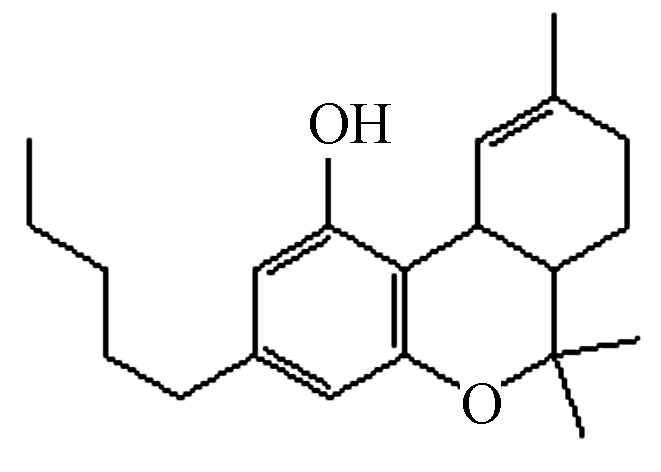
2.44×10−7 6.17×10−6 10.6 2.8×103 海洛因 Heroin HER C21H23NO5 369.4 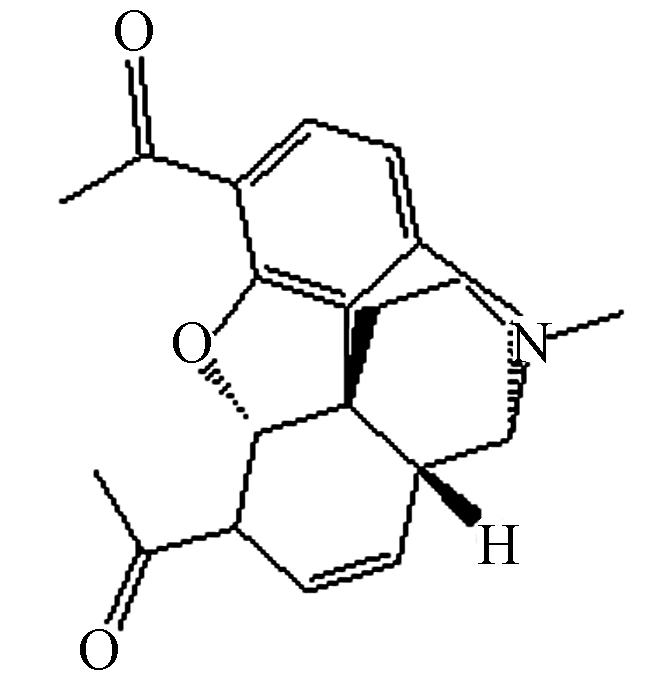
6.15×10−13 1.01×10−7 7.95 0.6×103 吗啡 Morphine MOR C17H19NO3 285.3 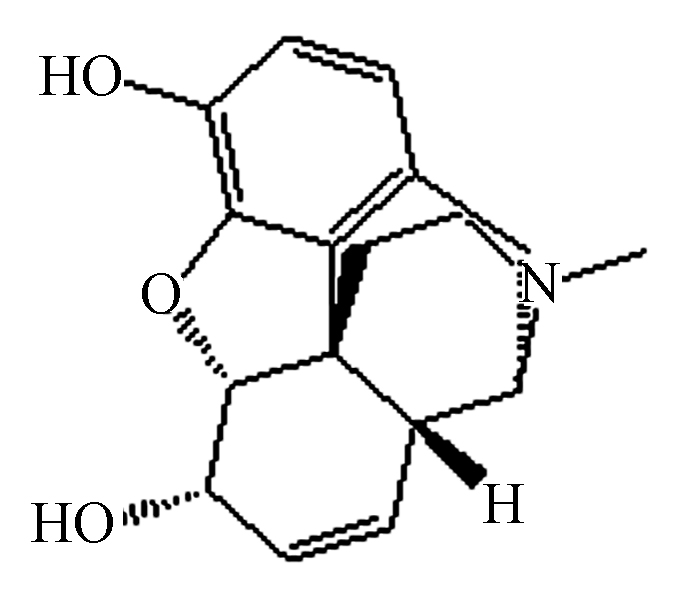
1.33×10−16 2.5×10−8 8.21 1.49×102 甲基苯丙胺 Methamphetamine MA C10H15N 149.2 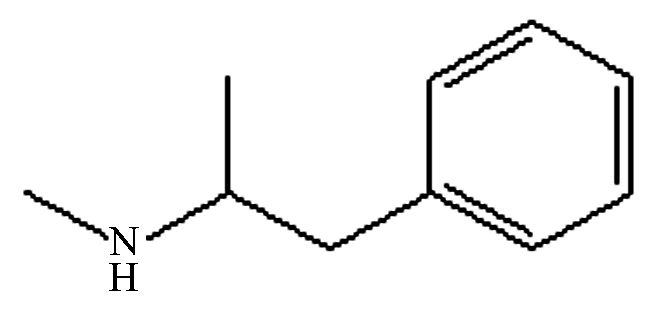
2.37×10−6 0.60 9.87 1.33×104 苯丙胺 Amphetamine AM C9H13N 135.2 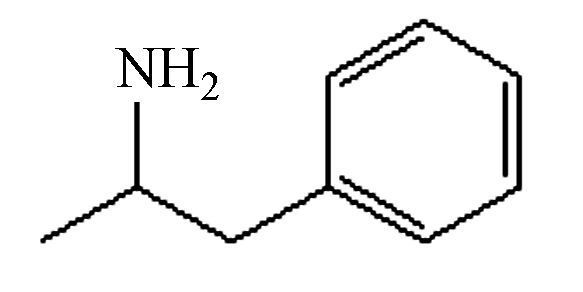
1.08×10−6 32.0 10.1 2.8×104 3,4-亚甲
二氧基甲
基苯丙胺3,4-
methylenedioxymethamphetamineMDMA C11H15NO2 193.2 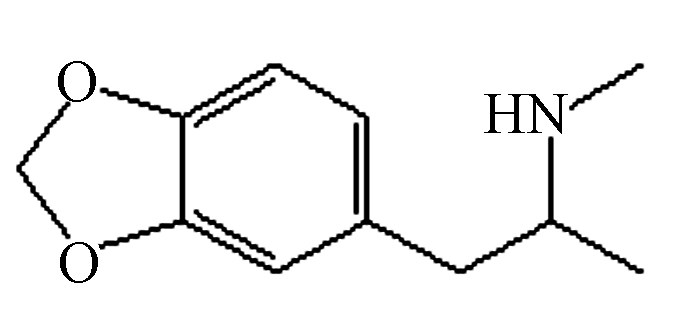
2.75×10−9 3.02×10−2 9.87 7.03×103 氯胺酮 Ketamine KET C13H16ClNO 237.7 
— — — — 表 2 全球主要地区大气颗粒物中常见毒品含量
Table 2. Concentrations of illicit drugs in particles in the world
国家
Country城市
City采样地点
Sampling site采样时段
Sampling period粒径
Particle size浓度/( pg·m−3) Concentration 文献
ReferenceCOC 总大麻素* △9-THC CBN CBD HER MA AM 意大利 罗马 大学 2003—2006
不同时段PM10 98±13 — — — — — — — [12] 商业区 12±10 — — — — — — — 峡谷街道 15±17 — — — — — — — 居民区 21±20 — — — — — — — 城市花园 70±47 — — — — — — — 郊区 10 ±10 — — — — — — — 农村 11±6 — — — — — — — 塔兰托 城区 2004夏季和冬季 PM10 <10 — — — — — — — 城镇 10±10 — — — — — — — 农业区 <5 — — — — — — — 阿尔及利亚 阿尔及尔 城区 2006夏季 PM10 <2 — — — — — — — 郊区 <2 — — — — — — — 意大利 罗马 城市花园 2008年9月 PM10 — — 30±5 17±5 2±1 — — — [13] 2008年10月 — — 58±15 19±10 <1 — — — 农村 2008年9月 PM10 — — 44±5 39±10 3±1 — — — 2008年10月 — — 104±61 70±22 6±3 — — — 巴里 郊区 2007年3月 PM10 — — 39±7 32±8 2±1 — — — 阿尔及利亚 阿尔及尔 工业区 2007年10月 PM10 — — <1 10±2 <1 — — — 意大利 罗马 人口密集区 2006年2—3月 PM10 69 — — — — — — — [14] 商业旅游区 2006年2—3月 36 — — — — — — — 学校 2006年2—3月 70 — — — — — — — 郊区 2007年春季 47 — — — — — — — 城市花园 2006年9月—2007年7月 63 — — — — — — — 城外 2006年9月—2007年7月 24 — — — — — — — 意大利 米兰 城区 2006夏—2007冬 PM2.5 208 — — — — — — — [14] 巴里 城区 2006冬季 PM10 13 — — — — — — — 塞尔维亚 潘切沃 公园 2006夏—2007春 PM10 <LOD — — — — — — — 消防队 <LOD — — — — — — — 居民区 <LOD — — — — — — — 化肥厂 <LOD — — — — — — — 城市背景点 <LOD — — — — — — — 葡萄牙 波尔图 城市背景点 2006年7月 PM10 148 — — — — — — — 阿尔及利亚 阿尔及尔 城区 2007夏季 PM10 <LOD — — — — — — — 居民区 <LOD — — — — — — — 工业区 <LOD — — — — — — — 智利 圣地亚哥 城区 2007年6月 PM10 2800 — — — — — — — 巴西 圣保罗 大学校园 2003冬季 PM2.5 590 — — — — — — — 2007秋季 250 — — — — — — — 皮拉西卡巴 大学校园 2003冬季 PM10 76 — — — — — — — 2007秋季 89 — — — — — — — 阿拉拉夸拉 大学校园 2003冬季 PM10 101 — — — — — — — 欧鲁普雷图 城区 2002冬季 PM10 47 — — — — — — — 2003秋季 101 — — — — — — — 西班牙 巴塞罗那 大学校园 2007年9—11月 PM2.5 204 — 27 — — <LOD 3.5 1.4 [16] 马德里 大学校园 2007年11月-2008年1月 PM2.5 480 — 44 — — 84 0.9 2.3 西班牙 巴塞罗那 夜生活区 2008年11月 PM10 194 — <LOD — — 26 6 13 [10] 大学校园 PM10 98 — <LOD — — <LOD <LOD <LOD 居民区 PM2.5 336 — 26 — — 11 2.8 15 马德里 夜生活区 2008年11月—12月 PM2.5 334 — 23 — — 44 10 <LOD 西班牙 马德里 大学校园 2008年11月—12月 PM2.5 63 — <LOD — — <LOD <LOD <LOD [10] 居民区 PM2.5 28 — <LOD — — <LOD <LOD <LOD 拉科鲁尼亚 夜生活区 2009年2月 PM10 85 — 34 — — 90 <LOD <LOD 郊区 PM10 57 — 26 — — 24 <LOD <LOD 居民区 PM10 11 — <LOD — — 5 <LOD <LOD 意大利 都灵 交通点 2011年6月—2012年5月 PM10 260±110 960±1370 — — — — — — [32] 米兰 城市背景点 100±60 300±370 — — — — — — 维罗纳 城市背景点 50±30 140±170 — — — — — — 博洛尼亚 交通点 70±60 680±760 — — — — — — 佛罗伦萨 交通点 80±30 260±280 — — — — — — 罗马 居民区 130±50 470±500 — — — — — — 那不勒斯 交通点 210±70 280±250 — — — — — — 巴勒莫 城市背景点 20±10 50±50 — — — — — — 西班牙 巴塞罗那 城区 2012年2—3月 PM10 267 — 75 985 214 15 40 12 [27] 英国 伦敦 城市背景点 2013年3月 PM10 230±110 — — 20±20 — — — — [28] 2014年7月 180±50 — — 60±20 — — — — 路边 2013年3月 50±30 — — 10±10 — — — — 2014年7月 60±10 — — 50±20 — — — — 荷兰 阿姆斯特丹 城市背景点 2011年3月 PM2.5,10 30 — — <10 — — — — 路边1 PM2.5 60 — — <10 — — — — 路边2 PM10 140 — — <10 — — — — 城市背景点 2013年3月 PM2.5,10 50±20 — — 20±10 — — — — 路边1 PM2.5 70±50 — — 10 — — — — 路边2 PM10 60±40 — — 30±30 — — — — 瑞典 斯德哥尔摩 城市背景点 2014年9—11月 PM2.5,10 <3 — — 20 — — — — *总大麻素为△9-四氢大麻酚(△9-THC),大麻酚(CBN)和大麻二酚(CBD)的浓度总和。**LOD:检出限。—表示未测定. -
[1] DAUGHTON C G, JONES-LEPP T L. Pharmaceuticals and care products in the environment[M]. Washington, DC: American Chemical Society, 2001. [2] GONZÁLEZ-MARIÑO I, BAZ-LOMBA J A, ALYGIZAKIS N A, et al. Spatio-temporal assessment of illicit drug use at large scale: Evidence from 7 years of international wastewater monitoring [J]. Addiction, 2020, 115(1): 109-120. doi: 10.1111/add.14767 [3] KHAN U, van NUIJS A L N, LI J, et al. Application of a sewage-based approach to assess the use of ten illicit drugs in four Chinese megacities [J]. Science of the Total Environment, 2014, 487: 710-721. doi: 10.1016/j.scitotenv.2014.01.043 [4] 刘春叶, 王喆, 冯佳铭, 等. 污水流行病学调查辽宁和吉林两省甲基苯丙胺滥用量和流行率 [J]. 环境化学, 2018, 37(8): 1763-1769. doi: 10.7524/j.issn.0254-6108.2017121802 LIU C Y, WANG Z, FENG J M, et al. Methamphetamine consumption and prevalence in Liaoning and Jilin Provinces investigated by sewage epidemiology [J]. Environmental Chemistry, 2018, 37(8): 1763-1769(in Chinese). doi: 10.7524/j.issn.0254-6108.2017121802
[5] 郑晓雨, 袁明俊, 王德高, 等. 基于污水流行病学的毒情研判技术研究进展 [J]. 生态毒理学报, 2020, 15(4): 79-87. ZHENG X Y, YUAN M J, WANG D G, et al. Sewage epidemiology for drug situation assessment [J]. Asian Journal of Ecotoxicology, 2020, 15(4): 79-87(in Chinese).
[6] CYRANOSKI D. Chinese cities scan sewers for signs of illegal drug use [J]. Nature, 2018, 559(7714): 310-311. doi: 10.1038/d41586-018-05728-3 [7] CECINATO A, BALDUCCI C, PERILLI M. Illicit psychotropic substances in the air: The state-of-art [J]. Science of the Total Environment, 2016, 539: 1-6. doi: 10.1016/j.scitotenv.2015.08.051 [8] VANDYKE M, ERB N, ARBUCKLE S, et al. A 24-hour study to investigate persistent chemical exposures associated with clandestine methamphetamine laboratories [J]. Journal of Occupational and Environmental Hygiene, 2009, 6(2): 82-89. [9] LIN Y C, HSIAO T C, LIN A Y C. Urban wastewater treatment plants as a potential source of ketamine and methamphetamine emissions to air [J]. Water Research, 2020, 172: 115495. doi: 10.1016/j.watres.2020.115495 [10] VIANA M, POSTIGO C, QUEROL X, et al. Cocaine and other illicit drugs in airborne particulates in urban environments: A reflection of social conduct and population size [J]. Environmental Pollution, 2011, 159(5): 1241-1247. doi: 10.1016/j.envpol.2011.01.032 [11] CECINATO A, BALDUCCI C, BUDETTA V, et al. Illicit psychotropic substance contents in the air of Italy [J]. Atmospheric Environment, 2010, 44(19): 2358-2363. doi: 10.1016/j.atmosenv.2010.03.032 [12] CECINATO A, BALDUCCI C. Detection of cocaine in the airborne particles of the Italian cities Rome and Taranto [J]. Journal of Separation Science, 2007, 30(12): 1930-1935. doi: 10.1002/jssc.200700039 [13] BALDUCCI C, NERVEGNA G, CECINATO A. Evaluation of principal cannabinoids in airborne particulates [J]. Analytica Chimica Acta, 2009, 641(1/2): 89-94. [14] CECINATO A, BALDUCCI C, NERVEGNA G. Occurrence of cocaine in the air of the World's cities: An emerging problem?A new tool to investigate the social incidence of drugs? [J]. Science of the Total Environment, 2009, 407(5): 1683-1690. doi: 10.1016/j.scitotenv.2008.11.004 [15] POSTIGO C, LOPEZ de ALDA M J, VIANA M, et al. Determination of drugs of abuse in airborne particles by pressurized liquid extraction and liquid chromatography-electrospray-tandem mass spectrometry [J]. Analytical Chemistry, 2009, 81(11): 4382-4388. doi: 10.1021/ac9002485 [16] VIANA M, QUEROL X, ALASTUEY A, et al. Drugs of abuse in airborne particulates in urban environments [J]. Environment International, 2010, 36(6): 527-534. doi: 10.1016/j.envint.2010.04.004 [17] CECINATO A, ROMAGNOLI P, PERILLI M, et al. Psychotropic substances in indoor environments [J]. Environment International, 2014, 71: 88-93. doi: 10.1016/j.envint.2014.06.008 [18] CECINATO A, BALDUCCI C, ROMAGNOLI P, et al. Behaviours of psychotropic substances in indoor and outdoor environments of Rome, Italy [J]. Environmental Science and Pollution Research, 2014, 21(15): 9193-9200. doi: 10.1007/s11356-014-2839-2 [19] CECINATO A, ROMAGNOLI P, PERILLI M, et al. Psychotropic substances in house dusts: A preliminary assessment [J]. Environmental Science and Pollution Research, 2017, 24(26): 21256-21261. doi: 10.1007/s11356-017-9549-5 [20] MCKENZIE E J, MISKELLY G M, BUTLER P A G. Detection of methamphetamine in indoor air using dynamic solid phase microextraction: A supplementary method to surface wipe sampling [J]. Analytical Methods, 2013, 5(20): 5418. doi: 10.1039/c3ay40537k [21] DORAN G S, DEANS R, de FILIPPIS C, et al. Air quality inside police drug safes and drug storage areas [J]. Journal of Analytical Toxicology, 2018, 42(5): 360-364. doi: 10.1093/jat/bky011 [22] RYNÖ M, RANTANEN L, PAPAIOANNOU E, et al. Comparison of pressurized fluid extraction, Soxhlet extraction and sonication for the determination of polycyclic aromatic hydrocarbons in urban air and diesel exhaust particulate matter [J]. Journal of Environmental Monitoring, 2006, 8(4): 488-493. doi: 10.1039/b515882f [23] 王婧媛, 侯臣之, 花镇东, 等. SPE-UPLC-MS/MS同时检测污水中多种滥用药物及其代谢物 [J]. 中国药科大学学报, 2020, 51(3): 305-312. doi: 10.11665/j.issn.1000-5048.20200308 WANG J Y, HOU C Z, HUA Z D, et al. Simultaneous determination of illicit drugs and their metabolites in wastewater by SPE-UPLC-MS/MS [J]. Journal of China Pharmaceutical University, 2020, 51(3): 305-312(in Chinese). doi: 10.11665/j.issn.1000-5048.20200308
[24] 周子雷, 杜鹏, 白雅, 等. 北京市生活污水中曲马多和芬太尼的赋存 [J]. 环境科学, 2019, 40(7): 3242-3248. ZHOU Z L, DU P, BAI Y, et al. Occurrence of tramadol and fentanyl use in domestic wastewater in Beijing [J]. Environmental Science, 2019, 40(7): 3242-3248(in Chinese).
[25] LAI H, CORBIN I, ALMIRALL J R. Headspace sampling and detection of cocaine, MDMA, and marijuana via volatile markers in the presence of potential interferences by solid phase microextraction-ion mobility spectrometry (SPME-IMS) [J]. Analytical and Bioanalytical Chemistry, 2008, 392(1/2): 105-113. [26] GUERRA-DIAZ P, GURA S, ALMIRALL J R. Dynamic planar solid phase Microextraction−Ion mobility spectrometry for rapid field air sampling and analysis of illicit drugs and explosives [J]. Analytical Chemistry, 2010, 82(7): 2826-2835. doi: 10.1021/ac902785y [27] MASTROIANNI N, POSTIGO C, LÓPEZ de ALDA M, et al. Comprehensive monitoring of the occurrence of 22 drugs of abuse and transformation products in airborne particulate matter in the city of Barcelona [J]. Science of the Total Environment, 2015, 532: 344-352. doi: 10.1016/j.scitotenv.2015.06.027 [28] BALDUCCI C, GREEN D C, ROMAGNOLI P, et al. Cocaine and cannabinoids in the atmosphere of Northern Europe cities, comparison with Southern Europe and wastewater analysis [J]. Environment International, 2016, 97: 187-194. doi: 10.1016/j.envint.2016.09.010 [29] RUSSO E B, JIANG H E, LI X, et al. Phytochemical and genetic analyses of ancient Cannabis from Central Asia [J]. Journal of Experimental Botany, 2008, 59(15): 4171-4182. doi: 10.1093/jxb/ern260 [30] CECINATO A, BALDUCCI C, GUERRIERO E, et al. Possible social relevance of illicit psychotropic substances present in the atmosphere [J]. Science of the Total Environment, 2011, 412/413: 87-92. doi: 10.1016/j.scitotenv.2011.04.063 [31] CECINATO A, BALDUCCI C, MOLLICA R, et al. Social [and health] relevance of psychotropic substances monitoring in air [J]. Environmental Pollution, 2013, 179: 27-32. doi: 10.1016/j.envpol.2013.03.067 [32] ARMENTA S, GUARDIA M D L, ALCALÀ M, et al. Ion mobility spectrometry evaluation of cocaine occupational exposure in forensic laboratories [J]. Talanta, 2014, 130: 251-258. doi: 10.1016/j.talanta.2014.06.044 [33] CECINATO A, BALDUCCI C, ROMAGNOLI P, et al. Airborne psychotropic substances in eight Italian big cities: Burdens and behaviours [J]. Environmental Pollution, 2012, 171: 140-147. doi: 10.1016/j.envpol.2012.07.033 [34] BELL S, NIDA C. Pyrolysis of drugs of abuse: A comprehensive review [J]. Drug Testing and Analysis, 2015, 7(6): 445-456. doi: 10.1002/dta.1794 [35] NAQI H A, PUDNEY C R, HUSBANDS S M, et al. Analysis of synthetic cannabinoid agonists and their degradation products after combustion in a smoking simulator [J]. Analytical Methods, 2019, 11(24): 3101-3107. doi: 10.1039/C9AY00722A [36] RASO S, BELL S. Qualitative analysis and detection of the pyrolytic products of JWH-018 and 11 additional synthetic cannabinoids in the presence of common herbal smoking substrates [J]. Journal of Analytical Toxicology, 2017, 41(6): 551-558. doi: 10.1093/jat/bkx039 -




 下载:
下载:









